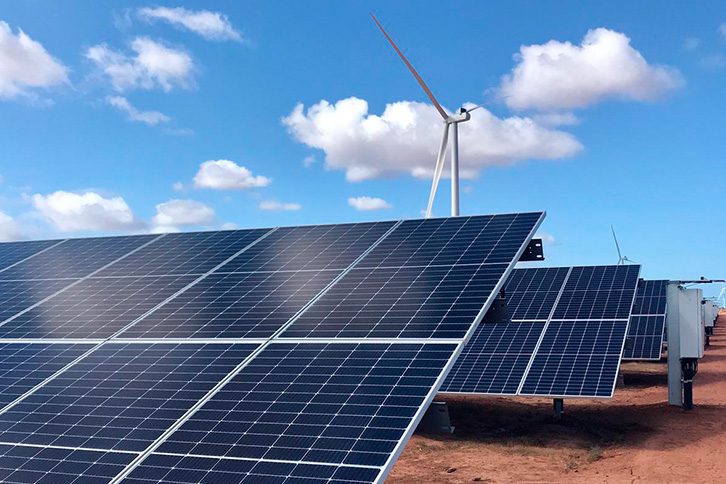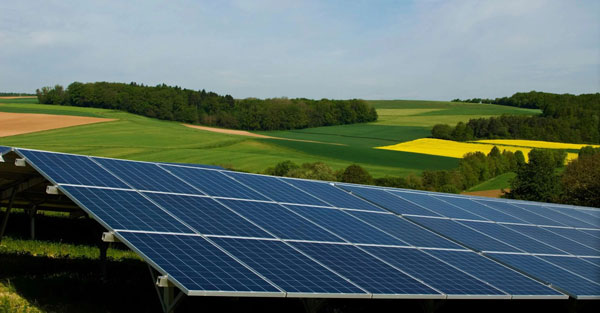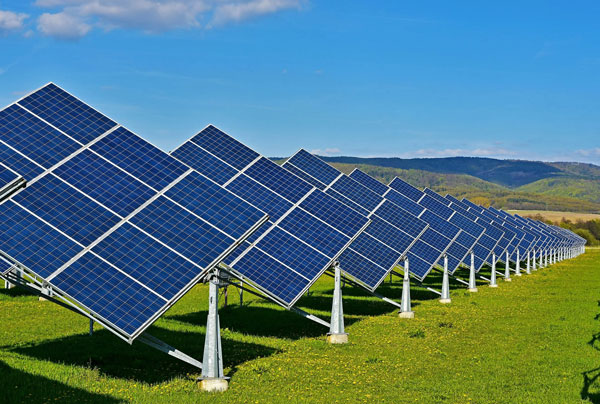Can Solar Panels Operate at Night
They are not well-suited to turning sunlight into electricity; it is less effective. It is worth mentioning that solar panels do not stop working during the night; they just do not produce electricity without sun. Power availability through the night is ensured through other means, the storage of the excess energy that is generated during the day through solar batteries.
Energy Storage Systems
The most obvious measure for ensuring power supply during dark times like at night is undoubtedly the employment of energy storage systems. Large batteries can be charged with electricity generated by solar panels during the day so that it can be used throughout the night. As an example, regularly a standard domestic energy storage system is set up to save up to approximately 10-20 kilowatt-hours (kWh) of energy which ought to be enough to keep essential domestic functions running through the night.
Grid Connectivity
Most solar homes also remain on the conventional energy grid to ensure continual access to energy. Some net metering states allow net metered homeowners to receive compensation for excess electricity produced by solar panels during the day (in the form of credits that can offset power consumption at night). The credit can be used to recharge on the grid at night at zero cost ensuring 24 x 7 availability of power.
Solar Plus Storage Solutions
The advent of solar-plus-storage systems have become popular due to progress in solar technology,with these systems consisting of solar panels coupled with storage solutions. Such systems are created for optimal energy utilization and storage that can move from stored power to grid power itself as necessary, thereby being as efficient as possible while being cost-effective.
Residential Solar in California - Case Study
And a lot of homes in California-home to lots of big solar installations-are combining some solar panels with Tesla Powerwall batteries. In addition to providing power at night, these systems can serve as an emergency backup, increasing energy independence and supplying a defensive measure against grid power outages. According to its data, homes with such systems generally cut grid energy use by between 90 and 100 per cent, which can result in huge cost savings when it comes to electricity bills, and independence from the grid.

How Long Do Solar Panels Last
Solar panels a long time, with their lifetime usually averaging between 25 to 30 years. This does not mean that they cease to work after this time, but that their energy power output will become a little less than 80% of what it once was.
Manufacturing and Warranty
Solar panels generally come with a performance warranty to at least guarantee some level of production for 25 to 30 years. The manufacturers guarantees a retention of top performance at 80% of the original capacity until the end of the warranty. It is a commitment that is supported by very strict manufacturing tests and quality controls so that the panels can face environmental factors such as UV light, wind or temperature variations, and produce the maximum efficiency promised.
Real-World Performance Data
But data from the real world has supported the manufacturers' claims, showing only minor annual degradation. Solar panels do start like losing their sleek by 0.5% to 0.8% in efficiency every year or so, studies confirm. At a practical level, this means that a panel installed today, should still churn out around 10% less in 20 years time which is obviously well within the purview of any typical warranty.
Maintenance and Longevity
Solar panels are easy to maintain, yet performing maintenance on them ensures the longevity and peak performance. Cleaning the charger is an everyday solution that helps to remove dust, debris and other stuff that could prevent it to work optimally. Making sure it is not being shaded by new structures or new growth of trees can help to avoid surprises in output.
What Features Do You Need and What You Do Not A few items to consider for upgrade or replacement.
Although solar panels as a physical structure are built to last for much longer, technology improvements may make this consideration while you are decade along. More efficient newer models, or panels with features such as onboard battery storage, could make replacement cost-effective after a large proportion of the life of the original panels is up.
What Maintenance is Needed for Solar Panels
Solar panels require less maintenance than other energy systems; however, regular maintenance is needed to maintain proper performance and life longevity. Unlike our previous example, this maintenance routine is typically simple, needs to be done on a periodic basis and, generally, involves some cleaning.
Routine Cleaning
For most solar systems, the most frequent maintenance chore is washing panels to get rid of accumulated dirt, leaves, and other detritus that causes overshadowing and lowered productivity. Solar panels should be cleaned at least twice a year, depending on location. In extremely dusty areas or places where birds drop excrement on a regular basis, you may have to clean the plates more often. Detergent is usually just mild soap in water, and a soft brush or a long handled squeegee to stop the panels being scratched.
Inspection for Damage
Physical damage: These might not actually disable the CDN completely, but are important enough to merit annual inspection. These include shattered glass, wire wear, and the strength of the mounting mechanism. This would promote better detection and less scope for more serious maintenance issues later on. This inspection should be carried out by a professional, as it would have the proper tools and experience, and will ensure no harmful gases are being released into the air.
Monitoring System Performance
Increasingly common for solar systems to be sold with monitoring software, you can finally get a good idea of how much energy your system is producing in real-time. This will help owners quickly learn of their systems losing efficiency over time, which may be due to shading from new obstructions, dirt that has settled and accumulated on the modules, or even equipment malfunctions. The forward-looking methodology helps catch issues before they trigger a larger effect on production, which cuts down downtime and gets systems back up to operating temperature faster.
Managing Vegetation and Shade
Keep the panels as efficient as possible, the vegetation around the panels needs to be well managed so that there is no shading near the panels. Trees and shrubs can increase rapidly, and an area that as just soon as sunny can come to be shaded, risking solar energy times. This can be controlled by regular trimming.
How to Calculate the Payback Period for Solar Investment
If you want a detailed article, there are a few steps and factors in the payback calculation for a solar investment. Energy Modeling, Site Evaluation, System Design Comparative Pricing: This is important when determining the economics and long-term benefits of using solar power.
Initial Investment Costs
The first thing that you need to count as the total upfront cost which consist of the price of the solar panels, along with the installation cost, permits(if needed), as well as any additional set-up fees. As a guideline, if a common domestic solar setup expenses $15,000, this is the place to begin with your calculations.
Calculate Annual Benefits
Then calculate the annual benefit in dollars. This will include saving on what you pay for electricity, which can be calculated by considering how much your current cost are for energy and what you get from your solar. If your current electricity bill is around $2000 a year and the solar panels are expected to reduce that by 90%, you would save roughly $1800 a year.
Review Incentives and Rebates
And add to that any available govt rebates, tax incentives or utility company credits relevant to your area. Then subtract from the total initial cost the amount of your federal tax credit $3,000.
Calculate Net Cost
To find the net cost of your system, subtract any rebates and incentives from the initial investment. With those same numbers, if the system costs $15,000 before and you get $3,000 in tax credits, the true cost falls to $12,000.
Determine the Payback Period
The payback period is determined by dividing the net cost by the annual financial benefits. $12,000 / $1,800 = about 6.7 years payback period
Think About Other Money Matters
You have to account for increased property value (which is good) and lower energy costs. These items can even sweeten the economics on its install, shortening the actual payback period.

Are Solar Panels Harmful to the Environment
Green energy in its own right, solar panels should not be completely guilt-free for users, as while solar panels represent a carbon-free alternative to fossil fuels, they do come with environmental footprints during both production and disposal stages. The overall footprint is far lower than YES natural gas-fired or coal energy sources
Manufacturing Impact
Solar panels require the mining and chemical extracting of raw materials like quartz, and similar with raw materials like silver and aluminum, all of which have effects on the environment. A lot of energy is needed in industrial production, which is mostly based on fossil fuels and produces carbon dioxide. The solar industry has been increasingly utilizing clean energy sources to fuel these processes, slashing the carbon footprint substantially.
Chemical Use
In manufacturing, they use hazardous chemicals like hydrofluoric acid to clean and process the silicon wafers. Although these chemicals present hypothetical risks to the environment, with the advent of stringent regulations and technological advances in handling and disposal, the risk has been mitigated. Closed loop systems that recycle these chemicals are being used by companies to reduce the requirement of fresh inputs and waste generation.
Lifespan and Efficiency
Solar panels last for about 25 to 30 years and produce clean, emission-free electricity. This long working life, in turn, reduces the initial environmental impacts of production. Solar panels more than make up for the energy they cost to manufacturer and install over their life-cycle.
End-of-Life Management
Solar panels have a problem at their end-of-life: can they be disposed of because they are not biodegradable. Is solar panel recycling likely to work? At the moment, probably not. The industry is working towards new recycling techniques for high value components such as silver and silicon to minimize environmental exposure.
Comparison to Fossil Fuels
Final Thoughts: The bad news is that solar panels do raise environmental concerns at several stages of the production lifecycle and even at the end of the panels life; but globally, the environmental load of the operational solar panel is negligible or beneficial compared to fossil fuel power. They are also environmentally friendly by providing a renewable source of energy that significantly reduces greenhouse gas emissions and dependence on non-renewable resources. The transition to solar could also significantly cut air pollution and thus help reduce climate change and its adverse effects on ecosystems and human health.





